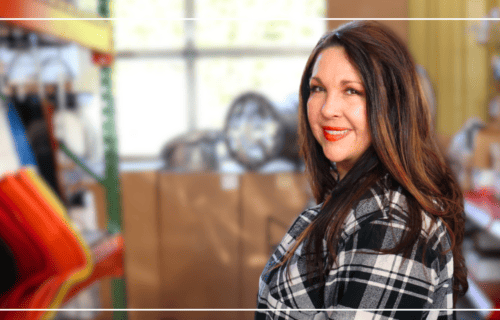
4 Things to Consider About Products Before Selling Them Online
I’ve been selling products online since April 2014. I sell racecar parts (yes, that’s really a thing) on my website crateinsider.com Over these past 8+ years, I’ve learned quite a few things about products that I would take into account if I were to start over or start something new.
Things to Consider
- Size of Products
- Sturdiness of Products
- Profit Margins
- Branding
Size of Products
This item tops my list for one simple reason; shipping is, by far, my largest expense- and that expense has continued to rise each year. It makes sense that the larger a product is, the more expensive it will be to ship.
Products I sell range from small items that can fit in an envelope to those that need to be shipped on pallets by truck freight. Most are in the mid-range of size and are shipped in boxes.
Speaking of boxes, though, the more varied in product sizes, the more box sizes you’ll need. And as your company grows, you’ll need more boxes on hand. They can take up quite a bit of room when there are multiple sizes and you’re ordering all of them in quantity.
If you have large items, it’s not a deal-killer, but smaller items are definitely easier to ship.
You can find other shipping tips in my article, Get Ship Done – 4 Shipping Tips to Save Money
Sturdiness of Products
I have a lot of products that are liquids. As I write this in 2022, I can tell you that I have seen more spillage and breakage this year than pretty much all other years combined. Sure, my business has grown significantly since previous years, but volume is about the same as the past couple of years. It’s frustrating to receive notifications that product has spilled and the package is being returned. It’s also expensive.
When a package spills, it means that it needs to be re-shipped to the customer. There is a loss of the original product and the cost of the second shipment. More importantly, there’s a loss of time and it is disappointing to the customer- especially when the item is something they needed right away.
And if you think for a second that the shipping carrier will take responsibility, you would be wrong. Inevitably, they blame it on us and there’s no recourse. They may provide packing suggestions, but they are generally ridiculous overkill.
Now we put Fragile stickers on every box containing liquids. It has helped sometimes, but not always. Recently I had a case of oil that I had to ship 3 times. I was so frustrated by that third time, that I may have overdone the labeling, but it got there safely.
When considering products to sell, be aware of how fragile or sturdy they are.
Profit Margins
Whew! This is an important one. If you’re new to sales, a profit margin is the difference in what a product costs you versus the amount you can sell it to customers. This is normally figured as a percentage.
How to Calculate Profit Margin
Here’s the formula to calculate profit margin and the percentage:
Retail Price – Cost = Gross Profit
Gross Profit ÷ Retail Price x 100 = Profit Margin Percentage
Example: You have a product that you can buy for $35 and you can sell it for $50
$50 – $35 = $15 gross profit
$15 ÷ $50 = 0.3 x 100 = 30% Profit Margin
The Right Profit Margin for Your Business
What’s a good margin to expect? It really depends on the industry and can range anywhere from 10% to 50%+. This is sometimes correlated with retail price. Higher priced items may have lower profit margins, but a substantial amount of gross profit. Would you rather sell a $1000 item with a profit of $100 (10%), or a $20 item with a profit of $10 (50%)?
The answer isn’t always simple, but it is something to research and be aware of. Gross Profit isn’t the money you put in your pocket. Profit is used to pay for expenses such as shipping, website, software, and everything else you need to run your business. Once all of your expenses are deducted, you land on your Net Profit. That’s the money you can put into your pocket or reinvest to grow the business.
With low profit margin/low retail priced items, it can be difficult to get ahead. It requires massive volume. This is especially true because, while some expenses will increase with sales, others are fixed expenses that will stay the same price and will need to be paid regardless of how many items you sell (such as rent).
Estimating Your Net Profit
When considering a product to sell, take a look at the margin, estimate how many you think you may be able to sell in a month, estimate expenses, and see if the numbers work for you. You may consider creating a table with ranges so you can see how the numbers stack up when you sell 10, 25, 50, or 100.
Here’s a simple table using the product from our earlier example. We are selling it for $50 and our cost is $35.
| Number Sold | Total Sales | Gross Profit |
| 1 | $ 50 | $ 15 |
| 5 | $ 250 | $ 75 |
| 10 | $ 500 | $ 150 |
| 25 | $ 1250 | $ 375 |
| 50 | $ 2500 | $ 750 |
| 100 | $ 5000 | $ 1500 |
Our next step would be calculate our fixed expenses such as the cost of our website. How many items need to be sold to cover the fixed expense?
Next, deduct variable expenses. Would you offer free shipping? If so, calculate a typical shipping cost and deduct this amount from the gross profit.
Branding
Will you sell products made by a well-known brand or will you create your own brand from scratch?
There are some big trade-offs here.
Selling name-brand products allows you to piggyback on the authority and brand recognition that has already been built. However, margins could potentially be smaller and you’ll find direct competition in the market with others who sell the exact same thing as you do.
If you decide to build your own brand of products, you’ll likely have the potential to have larger profit margins and you won’t have the same direct competition with others. There are likely similar products, but not the exact same thing. However, and this is a big however, building a brand from scratch is not for the faint of heart. It takes dedication, consistency, and a whole lot of patience. The results can be incredibly rewarding, but it’s not an easy path to navigate.
Wrapping Up
There’s no single right answer to every aspect of running an ecommerce business. With most of the lessons listed here, I learned the hard way. I’m glad I did, but it hasn’t always been easy. I hope these tips help you on your journey.




